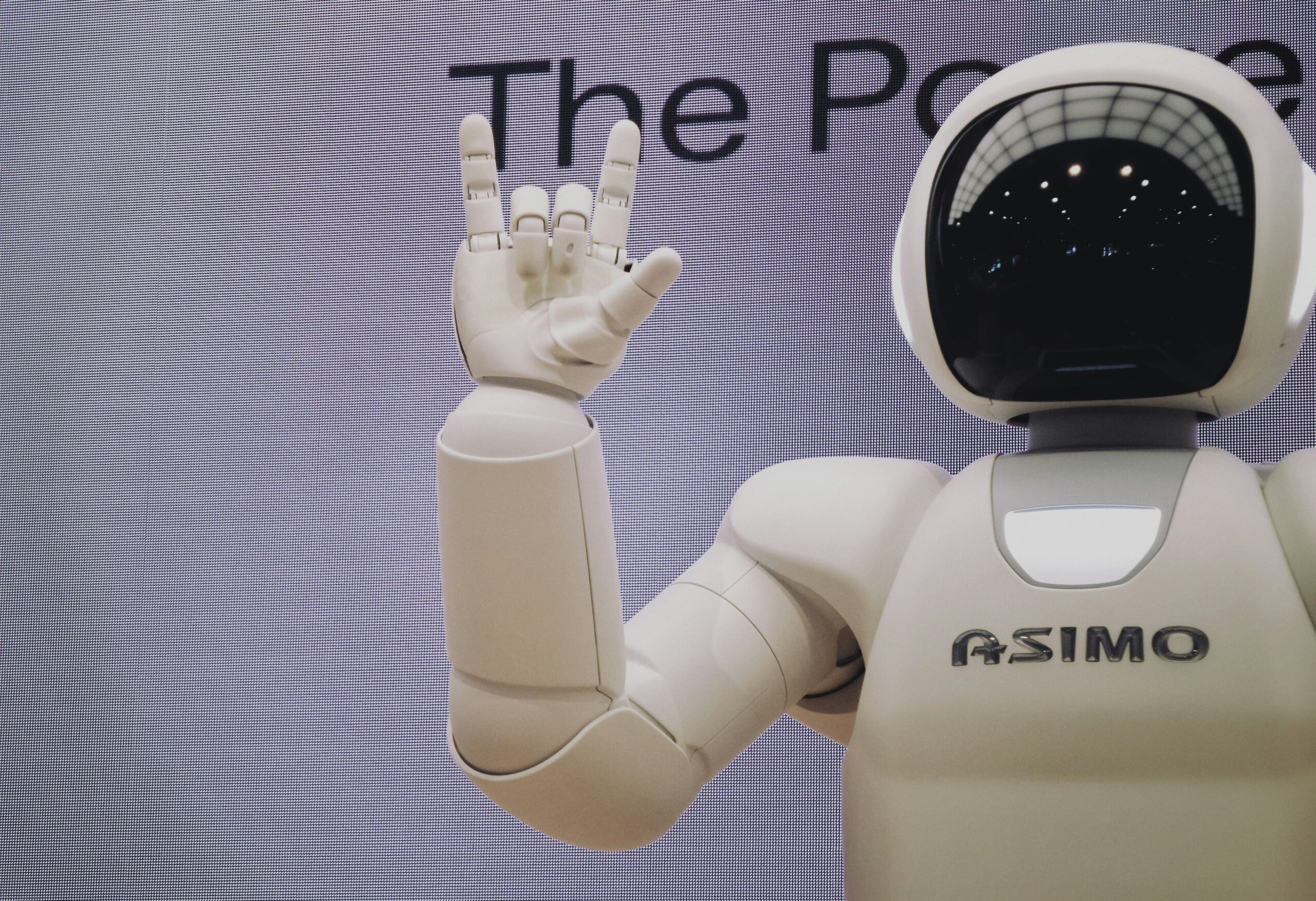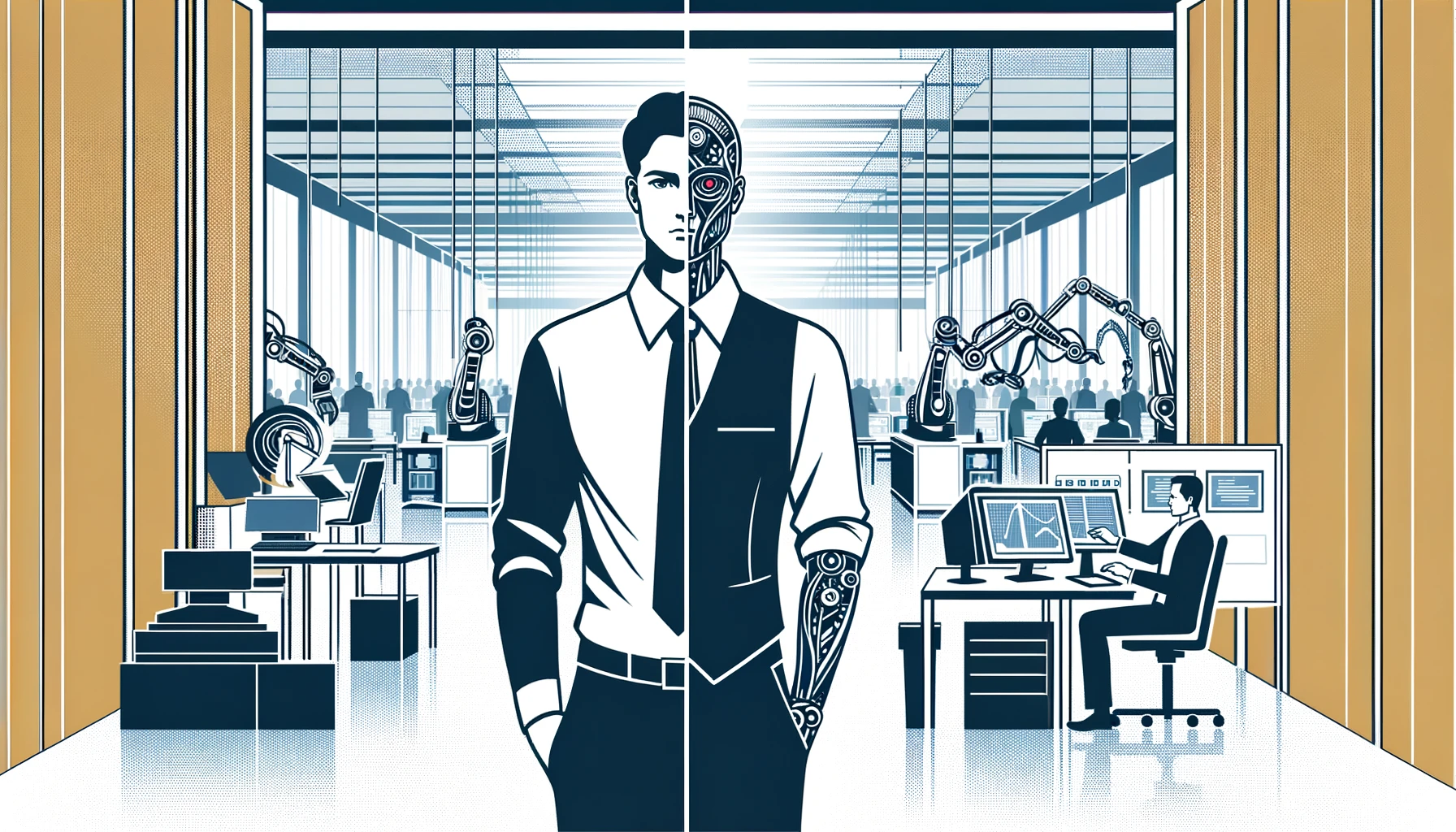“Artificial Intelligence” is no longer just a buzzword, but a key player in our lives, plays, and work. From Alexa and Siri to chatbots and self-driving cars, Artificial Intelligence has made our daily activities much easier and more advanced. AI is now a vast concept of technology that is exponentially growing, and understanding it can be a daunting task. Let’s make it simple for you to understand through this write-up and comprehend various types of artificial intelligence.
What is Artificial Intelligence?
Artificial Intelligence refers to building machines that showcase human-like intelligence to complete tasks. These machines learn from their experiences and improve their present outcomes. They give faster, more impressive, and enhanced results. In simple terms, imagine a computer or a robot that does tasks that usually require human intelligence like decision-making, speech recognition, visual perception, problem-solving, object recognition, and language translation—that’s AI for you! Machine Learning, Deep learning, and NLP (Natural Language Processing) that come under AI help accomplish this process. It implements complex algorithms and neural networks to complete tasks with the help of human-like intelligence.
In 2024, AI is not just a futuristic dream but our REALITY! It is now our go-to technology that helps in our everyday activities. Take examples of voice assistants like Google Assistant, Siri, Alexa, etc. who help us process our daily reminders, news, pending tasks, and more in a much easier and enhanced manner. From the voice commands your smartphone understands to the personalized recommendations on your streaming service, AI is the wizard behind the curtain, making it all happen. Now, AI has almost been introduced to most of the business sectors, transforming business operations, customer experiences, and market dynamics. Some of these sectors include:
- Security
- Healthcare
- Customer Service
- Entertainment
- Finance
- Education
- Retail
- Transportation and Logistics
As you have understood what Artificial Intelligence is, let’s move on to its various types.
Types of Artificial Intelligence
Artificial Intelligence can be categorized into three primary categories based on the capabilities these AI systems showcase.
- Narrow AI
- General AI
- Superintelligent AI
Let’s comprehend each of them and their capabilities below.
Narrow AI (Weak AI or Artificial Narrow Intelligence)
Narrow AI, which is also known as weak AI, focuses on completing the tasks that are specified to it without any intention of learning beyond its specified purpose. It also comes under Artificial Narrow Intelligence (ANI) which is a type of Artificial Intelligence where the model is particularly focused on following specified commands.
Some examples of these tasks include AI voice Assistants like Siri, Google Assistant, etc. help you with your daily activities through voice commands. Image/ face recognition systems utilized for security and authentication purposes help identify individuals in crowds with remarkable accuracy.
In recent years, Narrow AI has made significant developments, for example, self-driving cars and more. Along with these developments, it also has its drawbacks:
– Dependence on Data
– Inability to evolve and acquire knowledge
– Limited adaptability
– Insufficient understanding of context
Despite these drawbacks, Narrow AI is successfully helping its users complete their daily activities and plays a crucial role in many AI applications.
General AI (Strong AI or Artificial Strong Intelligence)
General AI- also known as Strong AI, showcases human-like intelligence and completes various tasks simultaneously. General AI comes under Artificial Strong Intelligence (ASI) which is the most advanced type of Artificial Intelligence. It possesses the capability to learn, think, and process multiple tasks similar to humans. We are still not there yet to develop a Strong AI system, which is one of the milestones to surpass in this developing Artificial Intelligence field.
The idea of developing a General AI system means that it might be able to have a conversation with you, solve problems on its own, or even make art.
Super-intelligent AI
The idea behind this AI category is to build an AI system that is smarter than humans, which is also a future concept. It is an exciting yet scary notion that these AI systems can solve complex problems or make decisions we can’t predict. These machines could exceed human intelligence across all domains, including problem-solving, broad knowledge, and creativity, which is yet to be achieved.
AI systems can also be classified based on their functionalities, which also come under types of Artificial Intelligence. These include:
– Reactive Machines
– Limited Memory AI
– Theory of Mind AI
– Self-aware AI
Let’s understand these AI systems in detail.
Reactive Machines
These AI systems do not store any memories. They commence tasks based on the available current data without any insights from their past experiences. Their main function is to analyze and respond to different circumstances. These types of systems help execute fundamental autonomous processes.
Some popular examples include:
– IBM’s Deep Blue, which overpowered chess grandmaster Garry Kasparov in 1997.
– Netflix recommendation system, which is based on recent searches.
– Spam filtering from email inboxes.
Limited Memory AI
As the name indicates, limited memory AI systems use collected past data to make informed decisions and improve performance gradually. These systems offer adaptable and more flexible solutions compared to reactive machines.
Some modern-day applications that fall into this category include:
– Virtual Assistants
– Chatbot
– Self-driving Cars
Theory of Mind AI
Theory of Mind AI falls under the advanced category of Artificial Intelligence where its agenda is to understand and interpret the human mind along with their beliefs, intentions, and emotions. For example, a self-driving car when passing through a school area will automatically reduce its speed, something that surpasses the limited memory AI model. These AI systems are still undergoing research and development with an agenda of interacting with humans and other agents with a better understanding.
Despite its vast benefits, building this AI system will pose a potential challenge of satisfying emotional needs. AI machines will take a significant amount of time to learn these highly complex emotional cues, which can cause potential threats in the learning stage. Moreover, it can automate certain occupations that will gradually raise ethical and societal questions.
Self-aware AI
Self-aware AI is an AI system like robots or computers that know they exist. Just like a human being who owns their thoughts and feelings, this AI system understands they are machines with their own “mind.” For example, it knows what it wants, thinks about itself, and even has its own idea of right and wrong. Right now, you can come across this concept in some movies and books you read. It is still a future concept where one has to figure out how to make a machine that truly knows it’s ‘alive’ in the way humans do. It’s a fascinating idea, but also a big challenge to build such an AI system.
| Types of Artificial Intelligence | |
| Based on Capabilities | 1. Narrow AI (Weak AI) 2. General AI (Strong AI) 3. Super-intelligent AI |
| Based on Functionalities | 1. Reactive Machines 2. Limited Memory 3. Theory of Mind 4. Self-aware AI |
| Based on Technologies | 1. Machine Learning (ML) 2. Deep Learning 3. Reinforcement Learning 4. Natural Language Processing 5. Computer Vision 6. Robotics 7. Expert Systems |
Branches of Artificial Intelligence
Continuous research on AI has successfully introduced many effective techniques to solve multiple problems that range from simple to complex. There are various branches of AI with its own set of effective techniques. Some crucial branches of Artificial Intelligence include:
- Machine Learning (ML)
- Deep Learning
- Reinforcement Learning
- Natural Language Processing (NLP)
- Computer Vision
- Robotics
- Expert Systems
Let’s break down the branches of Artificial Intelligence (AI) into simple terms. Think of AI as a big tree with lots of branches, and each branch does something special:
Machine Learning (ML)
Machine Learning is like training a computer to learn from experience. Just like you learn from your mistakes and successes, ML allows computers to improve at tasks by practicing and getting feedback. It’s the foundation of many smart things around us, from recommendation systems on Netflix to spam filters in your email.
Deep Learning
Deep Learning is a component of Machine Learning. It’s like giving the computer a very deep brain that can handle lots of layers of information. This helps computers recognize things like pictures or spoken words. For example, when Facebook tags photos of your friends automatically, that’s deep learning at work.
Reinforcement Learning
Imagine you’re training a dog by giving it treats when it does something right. Reinforcement Learning works similarly for computers. They try different things and learn from rewards or penalties. This method helps computers learn to play games or make smart decisions like a self-driving car figuring out the best way to go.
Natural Language Processing (NLP)
Natural Language Processing helps computers understand and use human language. It’s how voice assistants like Siri understand your questions, and how translation apps turn one language into another. NLP helps computers read, interpret, and even generate human-like text.
Computer Vision
Computer Vision is all about helping computers see and understand images and videos. It’s like teaching a computer to recognize what’s in a picture or video clip. This technology is used in things like security cameras to detect suspicious activities or in your phone to unlock it with your face.
Robotics
Robotics combines AI with machines that can move and do tasks. It’s not just about building robots; it’s about making them smart. Some robots help doctors in surgery, while others might clean your house or even explore other planets.
Expert Systems
Expert Systems are computers programmed with a lot of knowledge about one particular area to make decisions or give advice. It’s like having a digital expert on call. These systems can help diagnose diseases, offer legal advice, or predict weather changes.
Each of these branches helps AI to do amazing things, from understanding what we say to helping doctors in surgeries. Together, they make up the big, fascinating world of AI that we’re exploring more every day.
Wrapping Up
By 2024, AI isn’t just some fancy tech; it’s a shining example of what people can create and a light guiding us toward our shared future. Getting to know the different types of Artificial Intelligence and what they can do helps us get ready for the changes ahead and look forward to all the incredible things that are yet to be implemented.
Let’s look forward to the further development of AI from machines that can surpass humans to solve all the problems to self-aware AI systems. Let’s divert our efforts to understanding how these machines train and learn from their past experiences to help us effortlessly complete our essential day-to-day activities. Hope this article has helped you understand the types of AI and their functionalities in a simple yet detailed manner.
As we keep pushing the boundaries of what AI can do, it’s important to think about the ethical and social effects of these improvements. We should aim for a future where AI makes all parts of our lives better!










